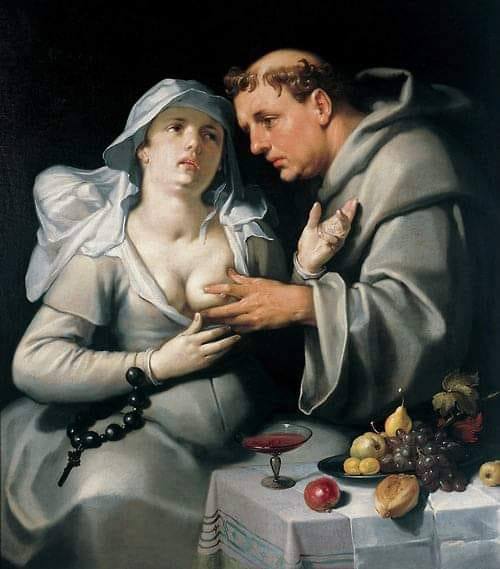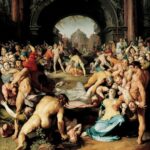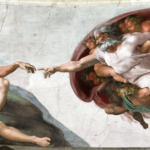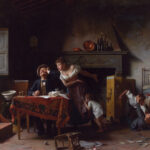
An intriguing image that, at first glance, might seem licentious, actually hides an ironic representation of the dynamics behind the austere walls of convents.
The 1591 painting, currently housed in the Frans Hals Museum in Haarlem, is the work of Cornelis Cornelisz van Haarlem (1562-1638), a Dutch painter from the Mannerist period. This piece appears to narrate the “Miracle of Haarlem,” a curious legend involving a nun accused of secretly giving birth to a child.
At first, themes of debauchery seem to emerge clearly, such as the sin of gluttony represented by succulent fruits, drunkenness highlighted by a cup of wine, and lust with the monk’s gesture of touching the nun’s breast. However, an alternative interpretation emerges.
The monk’s gesture might not be driven by lascivious intentions but rather seems to be a detached attempt to verify the contents of the breast, in search of evidence of the nun’s recent maternity. The twist in the tale occurs when, instead of breast milk, wine flows from the breast, thus exonerating the nun and restoring her purity.
Although this situation may seem unbelievable, miracles have their way of surprising. The painting, although not considered a masterpiece, manages to engage the audience with a touch of irony, regardless of which version of the story one chooses to believe: the licentious one or that of the legend.











